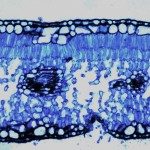Lien vers Pubmed [PMID] – 23967359
PLoS Negl Trop Dis 2013;7(8):e2366
BACKGROUND: During the 2012 cholera outbreak in the Republic of Guinea, the Ministry of Health, supported by Médecins Sans Frontières – Operational Center Geneva, used the oral cholera vaccine Shanchol as a part of the emergency response. The rapid diagnostic test (RDT) Crystal VC, widely used during outbreaks, detects lipopolysaccharide antigens of Vibrio cholerae O1 and O139, both included in Shanchol. In the context of reactive use of a whole-cell cholera vaccine in a region where cholera cases have been reported, it is essential to know what proportion of vaccinated individuals would be reactive to the RDT and for how long after vaccination.
METHODOLOGY/PRINCIPAL FINDINGS: A total of 108 vaccinated individuals, selected systematically among all persons older than one year, were included at vaccination sites and 106 were included in the analysis. Stools samples of this cohort of vaccinated participants were collected and tested with the RDT every day until the test was negative for two consecutive visits or for a maximum of 7 days. A total of 94.3% of cholera vaccine recipients had a positive test after vaccination; all except one of these positive results were reactive only with the O139 antigen. The mean time to become negative in those with an initial positive result after vaccination was 3.8 days, standard deviation 1.1 days.
CONCLUSIONS/SIGNIFICANCE: The RDT Crystal VC becomes positive in persons recently vaccinated against cholera, although almost exclusively to the O139 antigen. This reactivity largely disappeared within five days after vaccination. These results suggest that the test can be used normally as soon as 24 hours after vaccination in a context of O1 epidemics, which represent the vast majority of cases, and after a period of five days in areas where V. cholerae O139 is present. The reason why only O139 test line became positive remains to be investigated.


